A friend pointed out that macramé is a pattern made with knots, hence the quotes. What I was doing, he said, was weaving. Here’s a chair that I made for my brother and his wife.
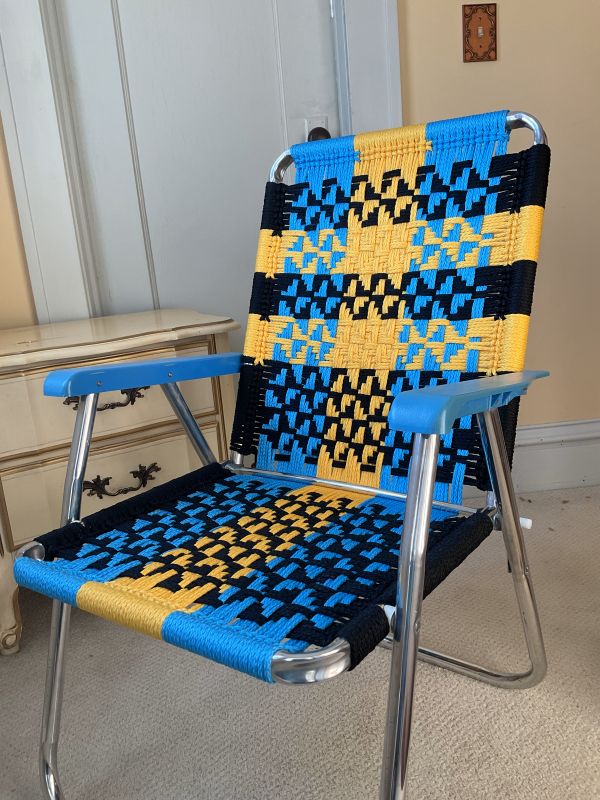
I wanted to weave a QR code into it, like this:
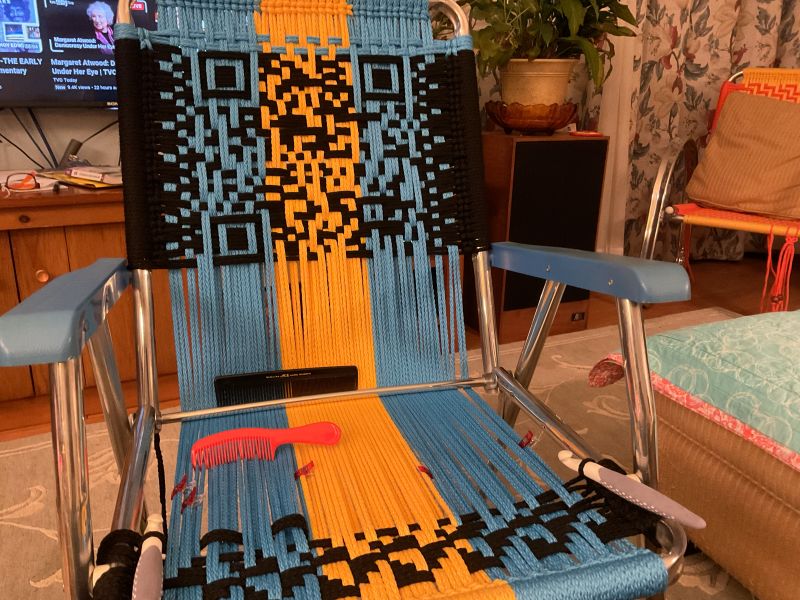
To make the pattern, I used a QR code generator. Then I transferred the image onto a spreadsheet. Because every line of code was different, it was slow and fussy work. In the end, weaving a QR code onto a lawn chair did not work, making the chair itself seem broken with its dead link. Using better contrasting colors and sticking to just two colors might have fixed the problem. But Christmas was coming and I didn’t have the time nor the patience to experiment further. For now, I’ll leave weaving QR codes to bamboo weaver Xie Shiyang.
On the bright side, starting over inspired a better way to keep track of a pattern without constantly referring to a piece of paper. First, note the pattern:
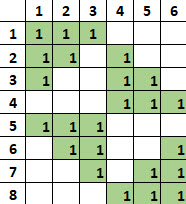
Width=6
Height=8
Identical rows: 1 & 5
Reverse Rows: 4 & 8 are the reverse of 1 & 5; 2 & 7; 3 & 6
Next make a cheat sheet. R-1, R-2 and R-3 are unique. The remaining rows are either identical or the reverse of these three distinct rows. This is indicated with parenthesis on my cheat sheet.
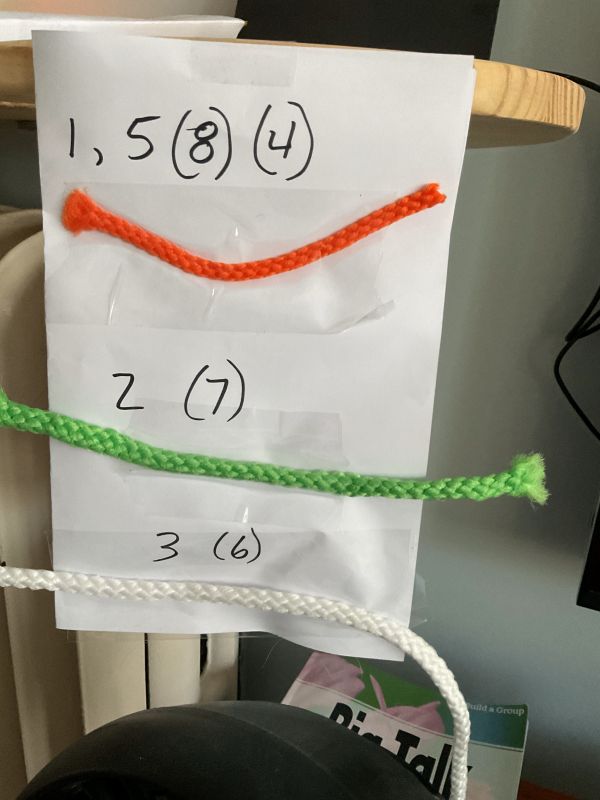
Another way to see this pattern is that there are two distinct rows: R-1 and R-2. The remaining rows are variations of R-1 and R-2. As an experiment, you could:
- In a 6 x 8 grid, make two random rows.
- For the 3rd row, shift R-2 to the left by three.
- R-4 is the reverse of R-1 (or shift to the left by 3, I’m not sure if there’s a difference)
- R-5 is the same as R-1
- R-6 is the reverse of R-3
- R-7 is the reverse of R-2
- R- 8 is the reverse of R1 (and R-5)
This is what I came up with in a few minutes of playing with my spreadsheet:
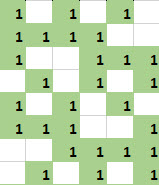
Here’s what the repetition looks like:
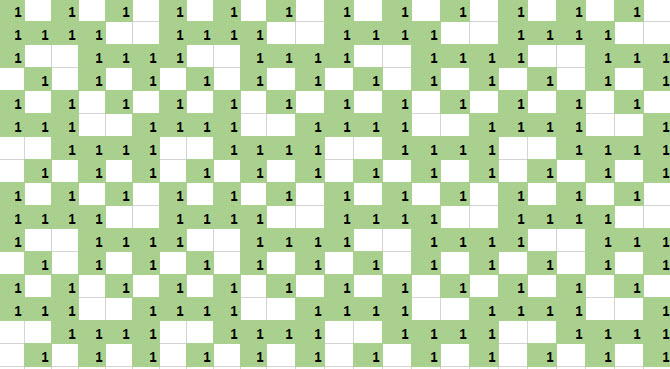
My spreadsheet (Excel) is set up to change colors when I enter a “1” in a cell, which makes it easy to experiment.
After making the cheat sheet (above), I wove in the corresponding colors into the chair. These temporary threads make it easy to weave without losing your place because you can see the pattern at a glance.
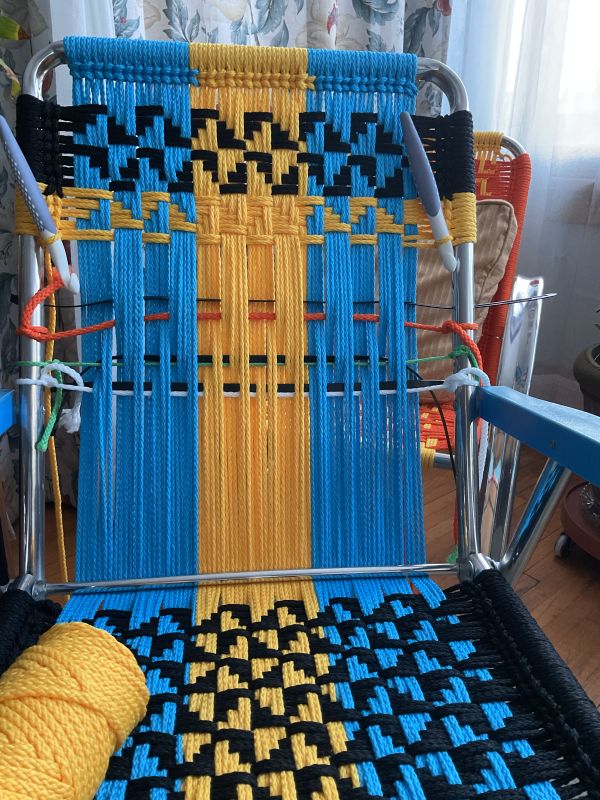
A large zip tie can be woven alongside each colored guide and twisted as needed to hold up the threads for easier weaving. Though imperfect, it’s easy to imagine an improved tool.
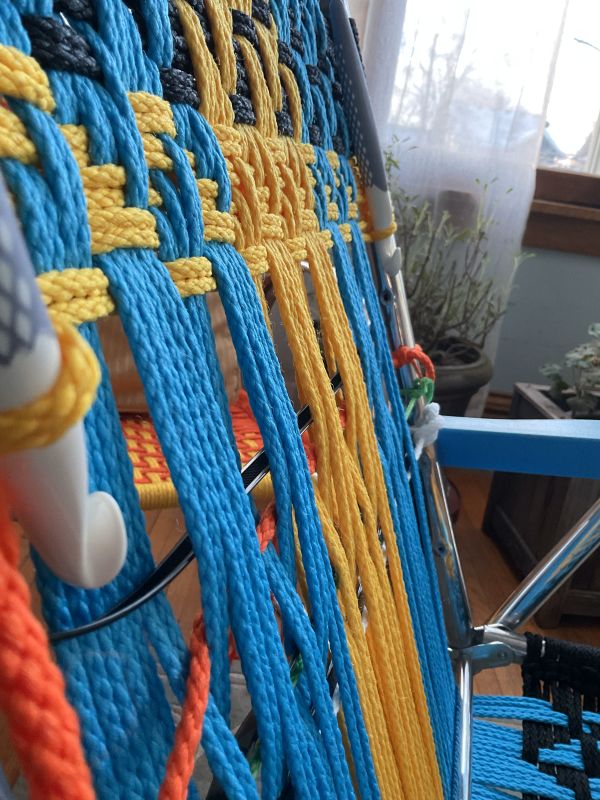
Zip ties can also be used as “needles” to get into tight spaces. Thread the eye of a zip tie with any string that fits and make a loop. Then thread your larger cord through the loop.
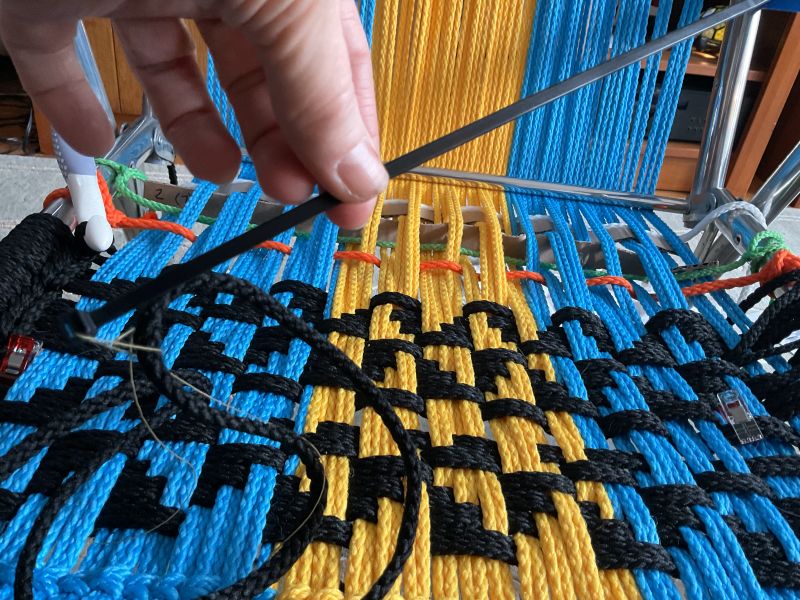
On a related note, it’s possible to correct a mistake without undoing rows of work. Depending on the issue, you can carefully untie rows, take out just the problem row, reweave it (a good use for the zip-tie-as-needle trick), and re-crochet everything back into place.
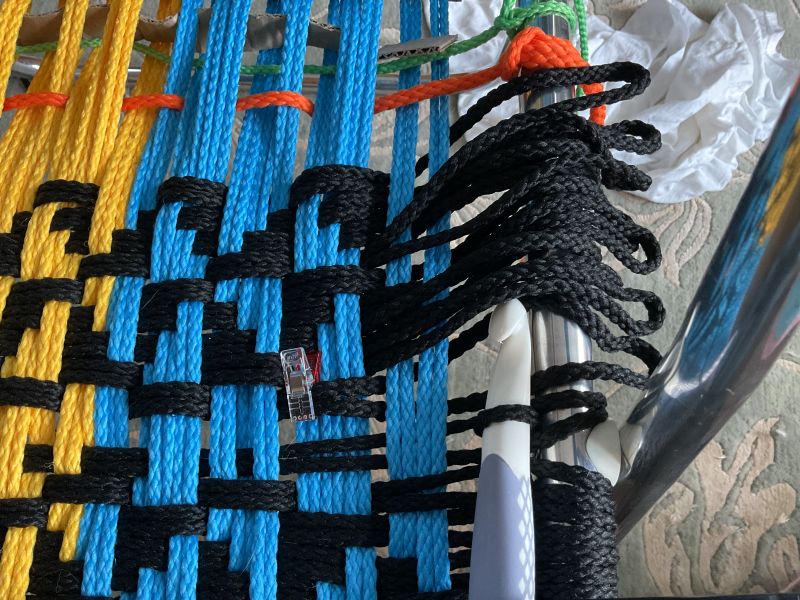
Here’s the chair before the new seat. The webbing was worn out and it was due to be replaced. As you can see, the arms of the chair were originally blue. I did not paint them, though some wondered if I had.
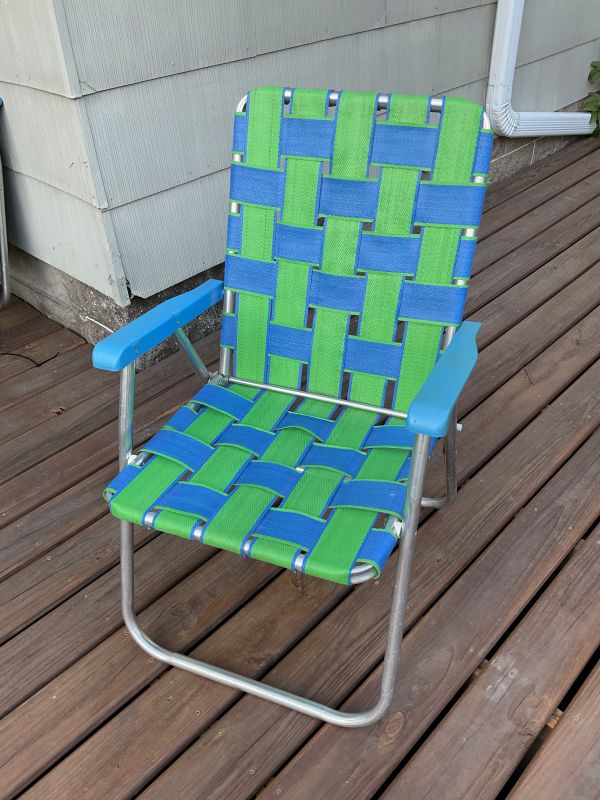
If you want more of a tutorial about how to weave a seat onto a lawn chair frame, see my post here where I included links to the tutorials on YouTube that got me started.